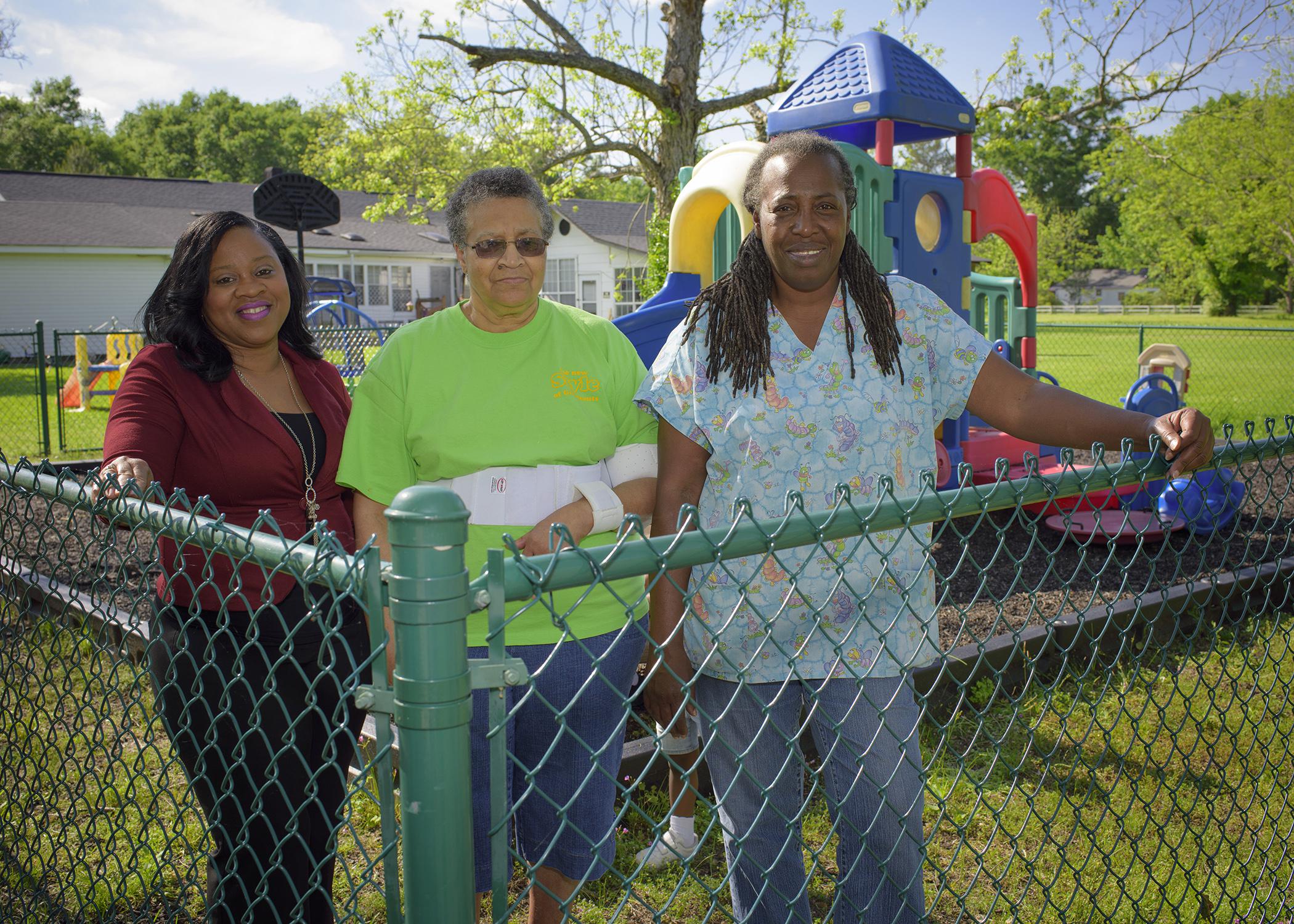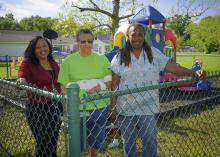Information Possibly Outdated
The information presented on this page was originally released on August 28, 2015. It may not be outdated, but please search our site for more current information. If you plan to quote or reference this information in a publication, please check with the Extension specialist or author before proceeding.
Playground project restores hope to south Mississippi
STARKVILLE, Miss. -- With so much loss after Hurricane Katrina, it would have been easy to overlook some of the state’s most vulnerable citizens: infants, toddlers and preschool children. Families needed to get back to work whenever possible, but without someone to watch their children, what could they do?
The storm devastated homes and businesses, and for a special set of entrepreneurs, their homes were their businesses. Across the 12 coastal counties most affected by the hurricane, early-care and education providers faced a daunting task: rebuilding their homes and in-home child care businesses as quickly as possible so both they and their clients could get back to work.
Then-governor Haley Barbour recognized the critical need to reconstruct child-care facilities, rebuild playgrounds and provide materials and training for child care providers to respond to the needs of children whose lives had been turned upside-down. Through the Mississippi Department of Human Services, the Mississippi State University Extension Service and Early Childhood Institute received more than $14.4 million to address this challenge.
Louise Davis, director of the Early Years Network, an Extension Service program, formed a team of experienced early-childhood education professionals to work specifically with in-home childcare providers. The Nurturing Homes Initiative team -- now called Family, Friend and Neighbor Care -- spent months working with contractors, equipment suppliers and caregivers to reestablish childcare services to pre-Hurricane Katrina levels.
“We assessed each business’s needs to determine what type of playground equipment was best suited to the ages of the children they served, and helped them design safe spaces for the children so devastated by the storm,” Davis said. “We made sure the fencing materials were appropriate, the play structures were installed correctly and mulch was laid to provide the right amount of safe surfaces for the playgrounds.”
Davis said many of the licensed child care centers on the coast were destroyed, which put an even greater burden on the existing in-home providers to expand their services.
“Parents were depending on in-home family child care centers to provide care for their children until the larger licensed centers could relocate to a temporary location or rebuild,” she explained.
Eloise Barnett has owned Lil’s Angels Family Center in Hattiesburg for 18 years. When Katrina hit, she cared for several children in her full-day and afterschool child care programs.
“Katrina ripped the roof off my house, and I had to close for two weeks because we didn’t have electricity,” Barnett said.
Norma Hayes, a field technical assistant with the Early Years Network, worked with Barnett to get her business up and running.
“Norma was a godsend,” Barnett said. “She and Dr. Davis came down and put in playground equipment, and I had such a great response from that. The kids loved it. They brought toys and educational materials. They’ve really helped me.”
Hayes worked with Barnett to implement best practices and attend child care training courses. Eventually, Lil’s Angels became a licensed center.
“When children leave me and go to school, the teachers say, ‘We know you’ve been with Mrs. Barnett,’ because they are ready for school,” Barnett said.
While the playgrounds were the most visible signs that life was returning to normal, field technical assistants provided less obvious help.
“We established long-lasting relationships with these child care providers,” said Kelly Carmody, now a project director for Family, Friend and Neighbor Care. “We mentored them in best practices, helped them replace educational resources, and demonstrated how to use those materials effectively to help young children learn at their developmental levels.”
Carmody admitted it was a long, hard and hot road, but the result was life-changing for the team and the clients they served.
“When we talk about that period of time, we remember the heat, the long hours, and the numerous challenges that were simply part of the massive undertaking required for everyone on the coast to rebuild,” she said. “But what stands out in my mind even more are the tears we shed as we partnered with dedicated educators who have a passion to work with young children, and we saw their excitement as we made progress in rebuilding.
“We didn’t just restore fences and play areas, we helped restore hope,” Carmody added. “A decade later, many of those providers are still in business and still call us to talk about our shared mission to provide high-quality early-learning experiences for children.”
The Early Years Network receives funding from the Mississippi Department of Human Services Division of Early Childhood Care and Development to provide early-care and education programs and materials for teachers, directors, children and families to improve the well-being of Mississippi’s youngest citizens.




